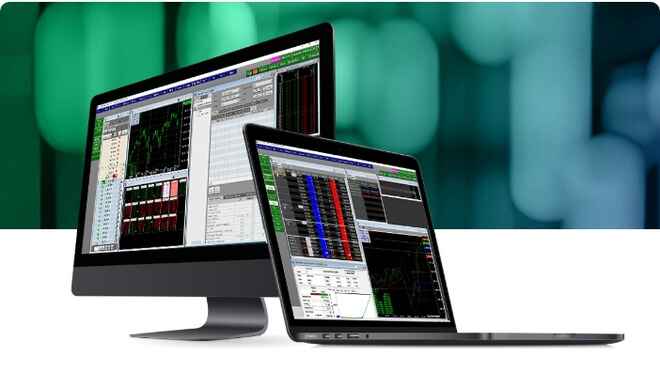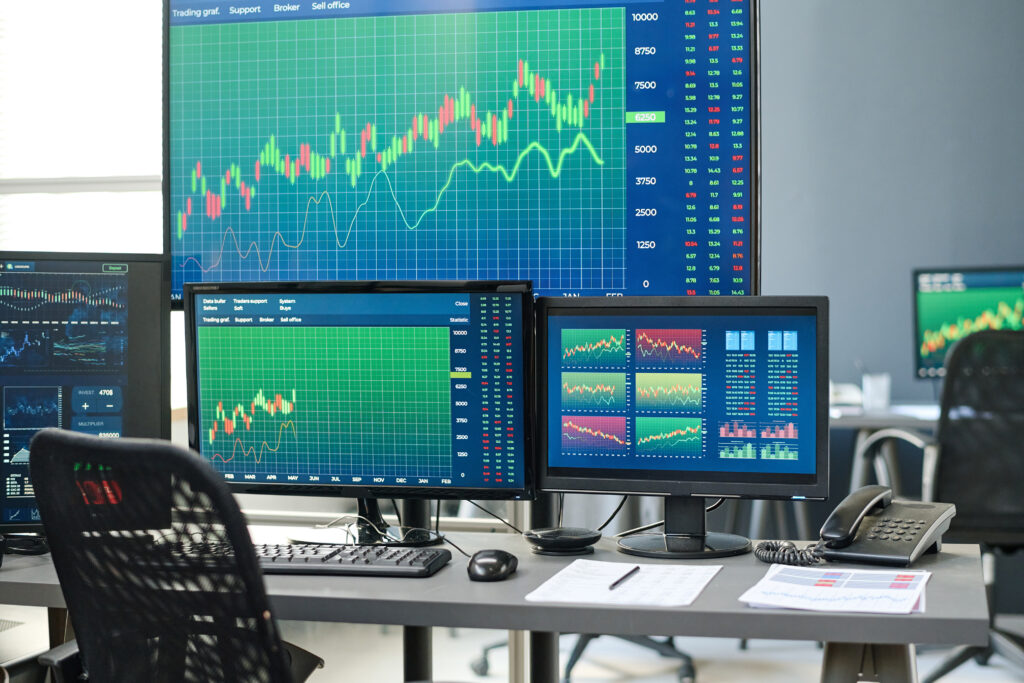The Russell 2000. It sounds like a futuristic robot from a sci-fi flick, but it’s actually one of the most popular tools in the option trader’s arsenal. Why do traders find the Russell 2000 so appealing? Many reasons, including broad exposure to some of the most attractive companies in which you can invest. Because this index tracks many smaller companies that operate in the domestic market, it also serves as a barometer of sorts for the U.S. economy. Success in this game requires careful preparation, however. With that in mind, let’s review what you need to know before understanding Russell 2000 futures market activity, while also delving into some tips for successful Russell 2000 futures trading
What is the Russell 2000?
To keep it simple, the Russell 2000 is an index, a slick financial tool that tracks the performance of about 2000 small-cap companies within the United States. Specifically, it tracks the performance of the 2,000 smallest companies in the Russell 3000, which in turn tracks nearly every publicly listed company in the U.S. Think of it like an enormous market thermometer, taking the temperature of ‘the little guys’ in the stock world. Now, the term “small-cap” may seem a bit demeaning, but don’t be fooled, these companies are the scrappy, tenacious underdogs that could grow to become the next Google or Amazon.
How Do Russell 2000 Futures Work?
These are financial contracts you can buy or sell, where the commodity at stake isn’t wheat or gold, but shares from the Russell 2000 index. Essentially, you’re betting on the future (hence the name) performance of these small-cap stocks.
Russell 2000 futures contracts represent $100 times the index. Each “tick” or smallest price movement is 0.10, equivalent to $10. Contracts expire quarterly in March, June, September, and December. Remember, understanding these specs is crucial as they impact your potential gains, losses, and overall trading strategy.
What is the Purpose of Trading Russell 2000 Futures?
It’s simple: To make money. A more expansive (and less glib answer) is that trading Russell 2000 futures can give you exposure to a broad market sector without having to buy each individual stock. In addition, they allow you to speculate on market direction, and hedge existing equity exposure, controlling the risk of unfavorable market swings.
How is Margin Calculated in Russell 2000 Futures Trading?
Let’s break it down: Margin is essentially a good-faith deposit. It’s the capital required to open and maintain a position in the futures market. For Russell 2000 futures, this amount is set by the futures exchange and is typically a small percentage of the contract’s total value.
There are two types to consider:
- Initial Margin
- This is the initial deposit you must put up to open a futures position. It’s like collateral to cover potential losses. The exact amount is determined by each exchange (usually a % of the contract’s value). Generally, the riskier the contract, the higher the initial margin requirement.
- Maintenance Margin
- This is the minimum amount of equity to maintain in a margin account after a futures position is opened. It’s lower than the initial margin and acts as a buffer to avoid frequent margin calls. If your account balance dips below this level due to losses, you’ll receive a margin call from your broker – and that is one call you want to avoid.
What Factors Influence Russell 2000 Futures Prices?
Speaking of value, you might be curious about what affects the price of Russell 2000 futures. Several factors are at play here. Broad market trends, economic indicators, and changes in the business cycle can all cause price fluctuations. Oh, and let’s not forget investor sentiment – because nothing says ‘financial market’ like a healthy dose of human emotion!
How Can Fundamental Analysis be Applied to Russell 2000 Futures Trading?
Fundamental analysis is all about the nitty-gritty details of the companies in the Russell 2000 index. It looks at things like earnings, revenue, debt, and more, to try to determine a company’s actual value. It’s like the Sherlock Holmes of investment strategy, examining the financial fingerprints of each business.
How Can Technical Analysis be Applied to Russell 2000 Futures Trading?
On the other hand, technical analysis is more like a fortune teller, but with algorithms and charts instead of a crystal ball. It relies on historical data and statistical trends to predict future price movements. If fundamental analysis is Sherlock, technical analysis is something closer to a brilliant mathematician using charts, graphs and signals from the past to unlock answers for the future.
What Trading Strategies are Commonly Used in Russell 2000 Futures Trading?
First off, the breakout strategy. It’s like the Houdini of trading, keen on spotting price “breakouts” – moments when the price escapes past a resistance level. The logic? If the price breaks out, it could signify a strong buying or selling opportunity.
Second up, the reversal strategy. When the market trends reverse, this strategy becomes your best friend. The idea here is to buy at the bottom of a down-trend and sell at the top of an up-trend. Sounds simple, but timing it right is the tricky part.
Third, trend following. This involves riding the market waves, buying when prices are increasing and selling when they’re declining. It’s like going with the flow in a fast-moving river.
Fourth, mean reversion,which is simply betting on price normalization. You buy when prices are low and sell when high, expecting the market to revert to its average. It’s like a financial boomerang!
Last but not least, the Hedging strategy. If you have an existing portfolio of small-cap stocks, you can use Russell 2000 futures to hedge your bets. Essentially, if you’re concerned about a potential drop in the small-cap market, you might short Russell 2000 futures as insurance.
While these strategies provide a decent starting point, remember the golden rule: one size does not fit all. It’s crucial to understand your own risk tolerance, market knowledge, and investment goals before diving in.
What Risks Should Traders Be Aware of in Russell 2000 Futures Trading?
In the world of Russell 2000 futures trading, our constant companion is risk. It’s an exhilarating yet terrifying rollercoaster ride – although one without a guaranteed safe landing. You see, futures are leveraged instruments – they allow you to control large amounts of assets with relatively little capital. While this means you can make hefty profits when the market swings in your favor, the flip side is equally true – losses can be substantial if the market decides to flip in the opposite direction.
Keep in mind that Russell 2000 futures, specifically, reflect the performance of small-cap companies. These firms often present greater volatility and unpredictability compared to their large-cap siblings. Economic changes, business cycles, even a sneeze in the wrong direction (figuratively speaking) can cause significant price fluctuations. So remember, approach risk like you would a hot stove – with caution and respect.
How to Trade Russell 2000 Futures – the First Steps.
First up, you need to set up an account. Most trading platforms will require some basic information – name, contact details, and a sprinkle of financial information. Expect a few questions about your trading experience and risk tolerance, too.
Now, platform selection. What’s the secret sauce here? Look for a platform with intuitive navigation, robust tools, insightful guidance, and a wealth of educational resources.
Once you’re all set up and you’ve familiarized yourself with the platform, it’s time for the exciting part – placing trades. Before you plunge in, it’s a good idea to practice in a risk-free environment. Many platforms offer demo or paper trading accounts, where you can practice trading with virtual currency.
Once you feel ready, it’s time to place your first real trade. Simply select ‘Russell 2000 futures’, input the number of contracts you want to buy or sell, set your price, and then hit that trade button.
Voila! You’re officially a Russell 2000 futures trader. Remember, the financial seas can be choppy, so arm yourself with knowledge, strategy, and sound advice.
How Can RJO Futures assist investors with Russell 2000 Futures trading?
Look no further than RJO Futures for your one-stop-shop for all things trading. Our platform is teeming with top-notch tools designed to give you the edge in your trading journey. Traders can benefit from the wisdom of our seasoned advisors and enrich their knowledge base with our comprehensive content library. Don’t wait another minute – navigate the futures market with RJO Futures, where your trading voyage begins and your financial freedom looms just beyond the horizon. Contact us today!


